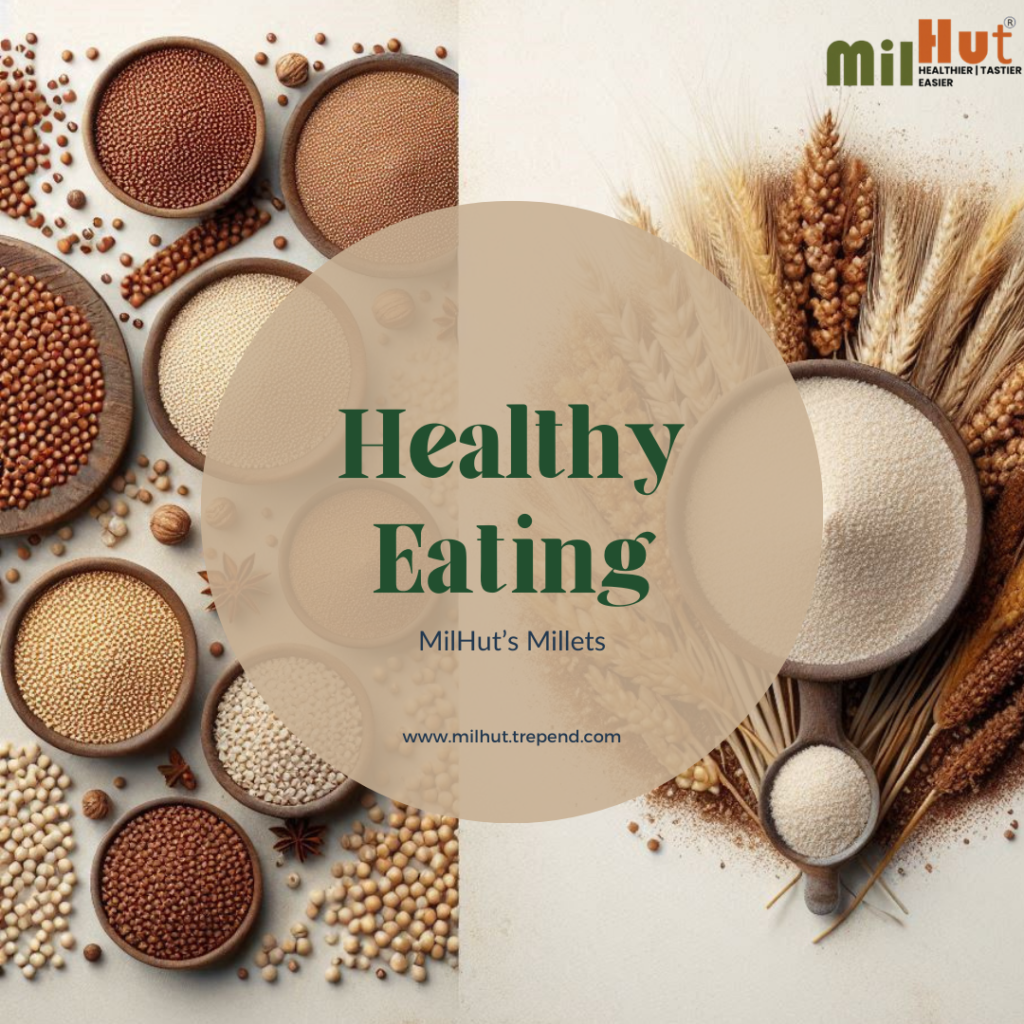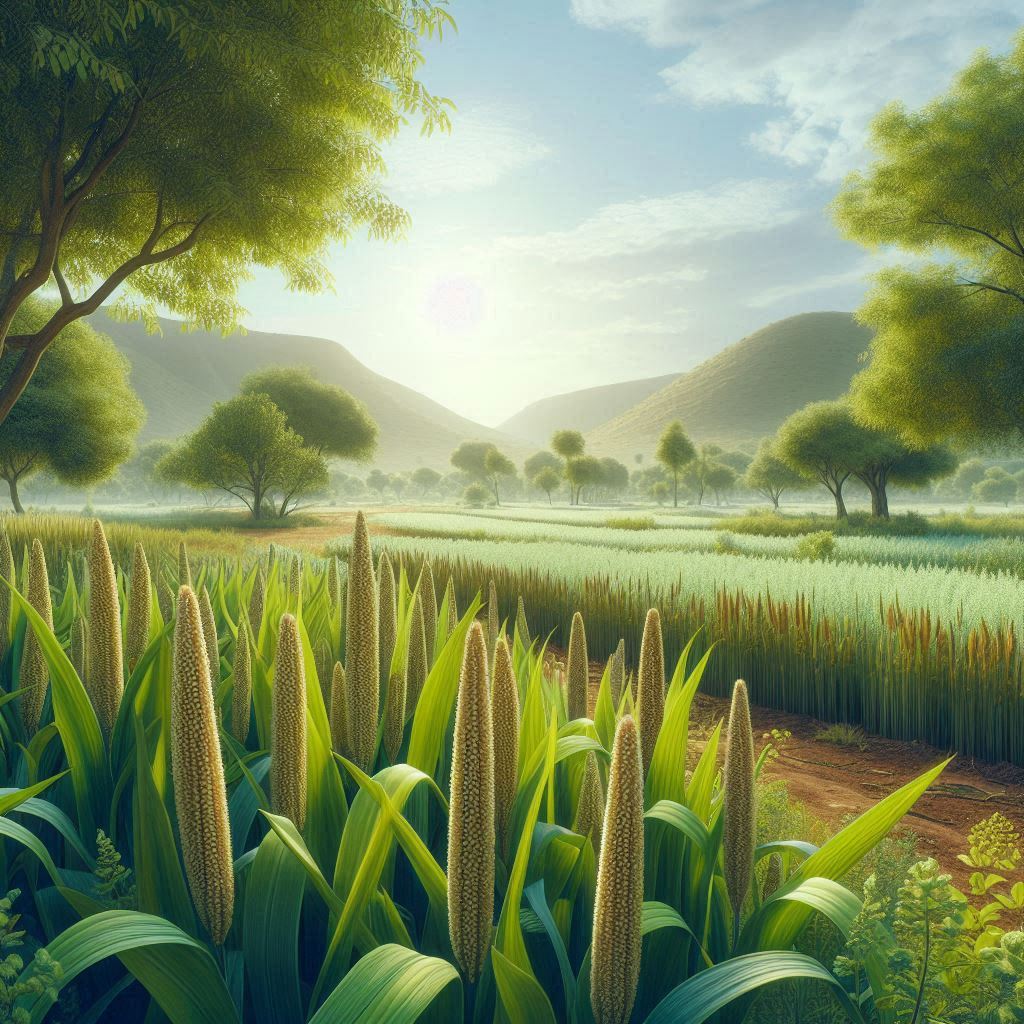Millets, once considered humble ancient grains, are now gaining popularity in the global food revolution. These nutrient-dense cereals, celebrated for their adaptability and sustainability, are gaining traction worldwide for their ability to address health challenges and promote eco-friendly agricultural practices. With their gluten-free nature, rich fiber content, and impressive nutritional profile, millets are increasingly being recognized as a powerhouse for modern diets. As global trends shift towards healthier, plant-based, and climate-resilient food options, millets are emerging as a cornerstone in the future of food systems.
Why Millets Are the Future of Global Food Systems
Millets are the future of food, offering a perfect blend of nutrition, sustainability, and versatility. These ancient grains are making a powerful comeback as global consumers seek healthier diets and eco-friendly agricultural practices. Join us as we explore why millets are leading the way in reshaping how we eat and grow food.”
What Are Millets? A Brief Overview
Millets are a group of small-seeded grains that have been cultivated for thousands of years in regions like Africa and Asia. Popular varieties include Ragi (finger millet), Bajra (pearl millet), Jowar (sorghum), and Foxtail millet. These gluten-free, nutrient-rich grains are drought-resistant and thrive in arid climates, making them a reliable food source for many developing regions.

The Global Rise of Millets
Health-Conscious Consumers Driving Demand
As people around the world prioritize healthier lifestyles, millets are becoming a popular choice due to their numerous health benefits.
- Rich in Nutrients: Millets are packed with essential vitamins, minerals, and antioxidants, including iron, calcium, and magnesium.
- Gluten-Free Alternative: Ideal for those with gluten sensitivities or celiac disease.
- Low Glycemic Index: Millets help regulate blood sugar levels, making them a preferred choice for diabetics.
- Fiber-Rich: They aid in digestion and promote gut health.
Sustainability at the Core
Millets are not just good for people—they’re good for the planet. Their cultivation requires less water compared to rice and wheat, and they thrive without synthetic fertilizers, reducing their carbon footprint.
- Drought Resistance: Millets can grow in semi-arid regions, supporting farmers in areas prone to water scarcity.
- Soil Health: Millet farming improves soil quality by reducing erosion and increasing organic content.
- Low Input Costs: Farmers benefit from reduced costs for irrigation and fertilizers, making millet cultivation economically viable.
Millets on the Global Stage
Government Initiatives and Policies
Countries around the world are recognizing the potential of millets and promoting their cultivation and consumption.
- India: Declared 2023 as the “International Year of Millets” to boost awareness and production.
- Africa: Governments are encouraging millet farming to combat food insecurity and malnutrition.
- Western Markets: The demand for millet-based products, such as cereals, snacks, and flours, has surged due to growing interest in plant-based diets.
Millets in Food Innovation
Global food brands and startups are incorporating millets into innovative products, from millet-based energy bars to gluten-free pasta. Restaurants are also featuring millet dishes, aligning with the farm-to-table and sustainability trends. https://milhut.trepend.com/millet-premix/
The Future of Millets: Challenges and Opportunities
Challenges to Address
- Awareness: Despite their benefits, millets remain underutilized in many parts of the world.
- Processing and Storage: Millets require specific processing techniques, which can be a barrier for large-scale adoption.
Opportunities for Growth
- Educational Campaigns: Raising awareness about the health and environmental benefits of millets can drive consumption.
- Research and Development: Investing in millet-based food innovation can expand their appeal to a global audience.
- International Trade: Increased export opportunities for millet-producing countries can boost global availability.
How Millets Contribute to a Sustainable Future
Millets are more than a food trend—they’re a solution to some of the most pressing global challenges. By reducing water usage, improving soil health, and providing nutritious food, millets offer a pathway to a sustainable and resilient food system.
When you choose millets, you’re making a choice that supports farmers, protects the environment, and prioritizes your health.
Conclusion:
As the world grapples with the dual challenges of ensuring food security and combating climate change, millets offer a promising solution. Their rich nutritional benefits, coupled with sustainable farming practices, make them an invaluable asset for both human health and the environment. By embracing millets, we not only honor an ancient food tradition but also pave the way for a healthier, more sustainable future. Whether it’s for their health benefits or their ecological significance, millets are set to play a pivotal role in shaping the future of global food systems.
Follow Us:



